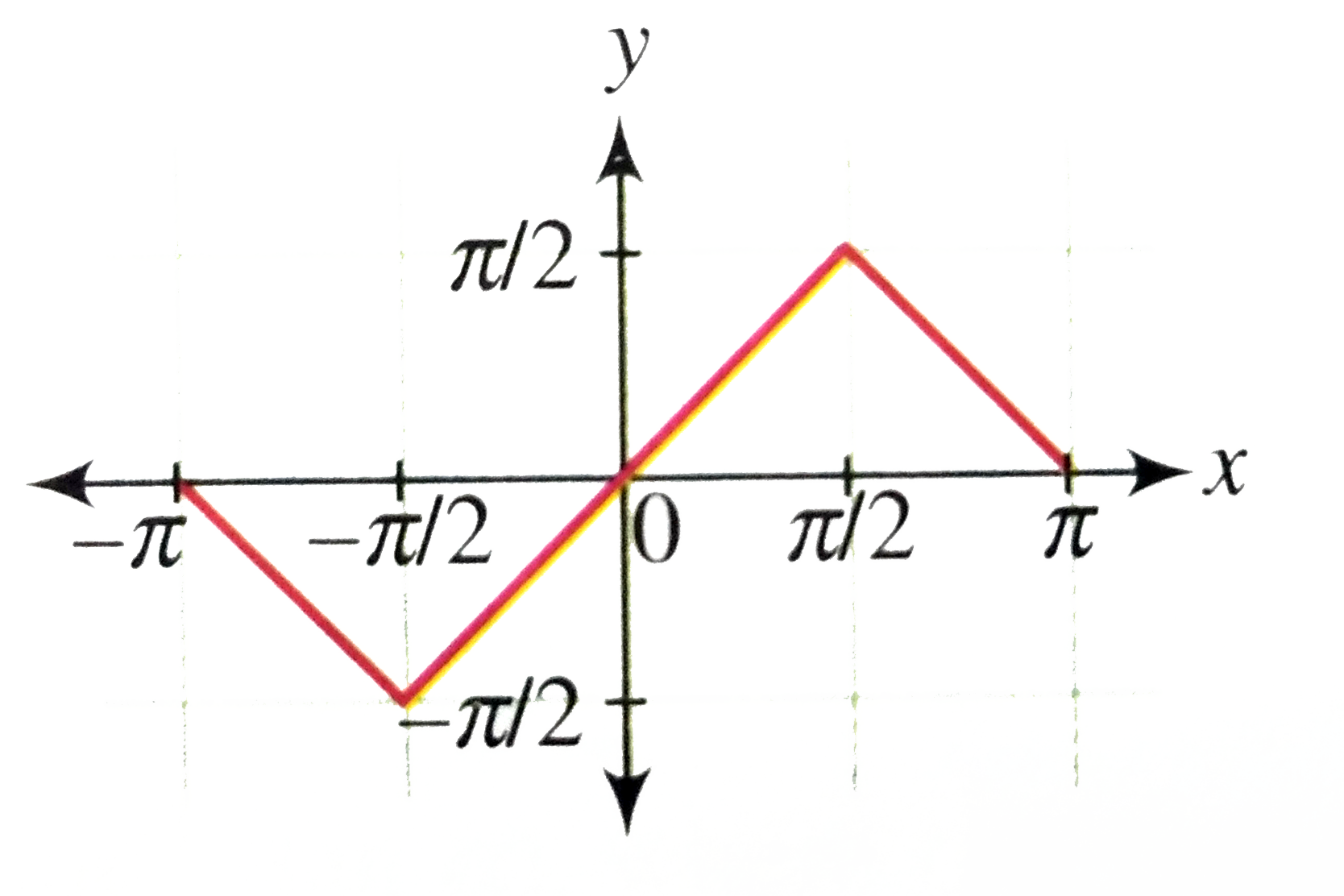InterviewSolution
Saved Bookmarks
| 1. |
Draw the graph of y=sin^(-1)((2x)/(1+x^(2))) |
|
Answer» Solution :We have `y=f(x)=sin^(-1)((2x)/(1-x^(2)))` LET x `=tan, theta, theta in (-pi//2,pi//2)` `rArr""theta=tan^(-1)x` `"Now"sin^(-1)((2x)/(1+x^(2)))=sin^(-1)((2tantheta)/(1+tan^(2)theta))` `=sin^(-1)(sin2theta)` `=sin^(-1)(sinalpha), "where "alpha in (-pi, pi)` Now consider the graph of `y=sin^(-1)(sin alpha),"where "alpha in (-pi, pi)`  From the graph. `sin^(-1)((2x)/(1+x^(2)))=sin^(-1)(sinalpha)` `={{:(-alpha-pi, -piltalphalt-pi//2),(alpha, -pi//2lealphalepi//2),(-alpha+pi,pi//2ltalphaltpi):}` `={{:(-2tan^(-1)x-pi,-pilt2tan^(-1)xlt-pi//2),(2tan^(-1)x-pi, -pi//2le2tan^(-1)xlepi//2),(-2tan^(-1)x+pi,-pi//2lttan^(-1)xltpi):}` `={{:(-2tan^(-1)x-pi,-pilt2tan^(-1)xlt-pi//4),(2tan^(-1)x-pi, -pi//2le2tan^(-1)xlepi//4),(-2tan^(-1)x+pi,-pi//4lttan^(-1)xltpi//2):}` `={{:(-2tan^(-1)x-pi,xlt-1),(2tan^(-1)x, -1lexle1),(-2tan^(-1)x+pi,xgt1):}` `f(x)={{:(-2/(1+x^(2)),xlt-1),(2/(1+x^(2)),-1ltxlt1),(-2/(1+x^(2)),xgt1):}` So f(x) DECREASES for `xlt-1xgt" and f(x) INCREASES for"-1ltxlt1` `underset(xto-oo)(lim)(-2tan^(-1)x-pi)=0" and "-2tan^(-1)(-1)-pi-pi/2` Thus, `sin^(-1)((2x)/(1+x^(2)))"decreses form 0 to"-pi/2"when x increases form "-oo" to "-1` `f(-1)=2tan^(-1)-pi/2,f(1)=2tan^(-1)(1)=pi/2` Thus, `sin^(-1)((2x)/(1+x^(2)))" increases form "-pi/2" to "pi/2" when x increases form -1 to 1"` `-2tan^(-1)(1)+pi=pi/2" and"underset(xtooo)(lim)(-2tan^(-1)x+pi)=0` Thus, `sin^(-1)((2x)/(1+x^(2)))"decreases form "pi/2" to 0 when x increases form 1 to "oo`. Also f(x) is non-differentiable at `x=+-1` From the above information, the graph of `y=f(X) ` is as SHOWN in the following figure.  From this information, we can DRAW the graph of `y=sin^(-1)((2x)/(1+x^(2)))` as follows. Here y = 0 is an asymtote. |
|